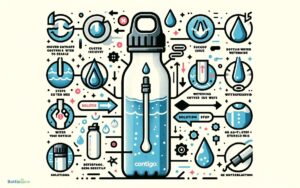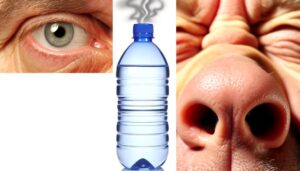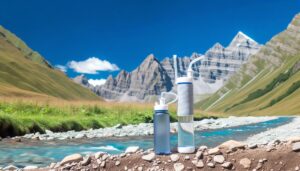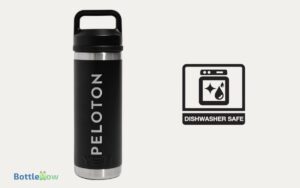Does a Hot Water Bottle Help Diverticulitis? Yes!
Yes, a hot water bottle can help alleviate diverticulitis pain. The heat increases blood circulation to the affected area, delivering nutrients and oxygen, which can reduce inflammation and muscle spasms.
Applying a hot water bottle to your abdomen can modulate nerve endings, providing pain relief. Make sure the temperature is warm, not scalding, and use a cloth to prevent burns. Limit application to 20 minutes for safety.
Always consult your healthcare provider to confirm that this method suits your condition and doesn’t interfere with other treatments. Discover more ways to effectively manage your diverticulitis symptoms.
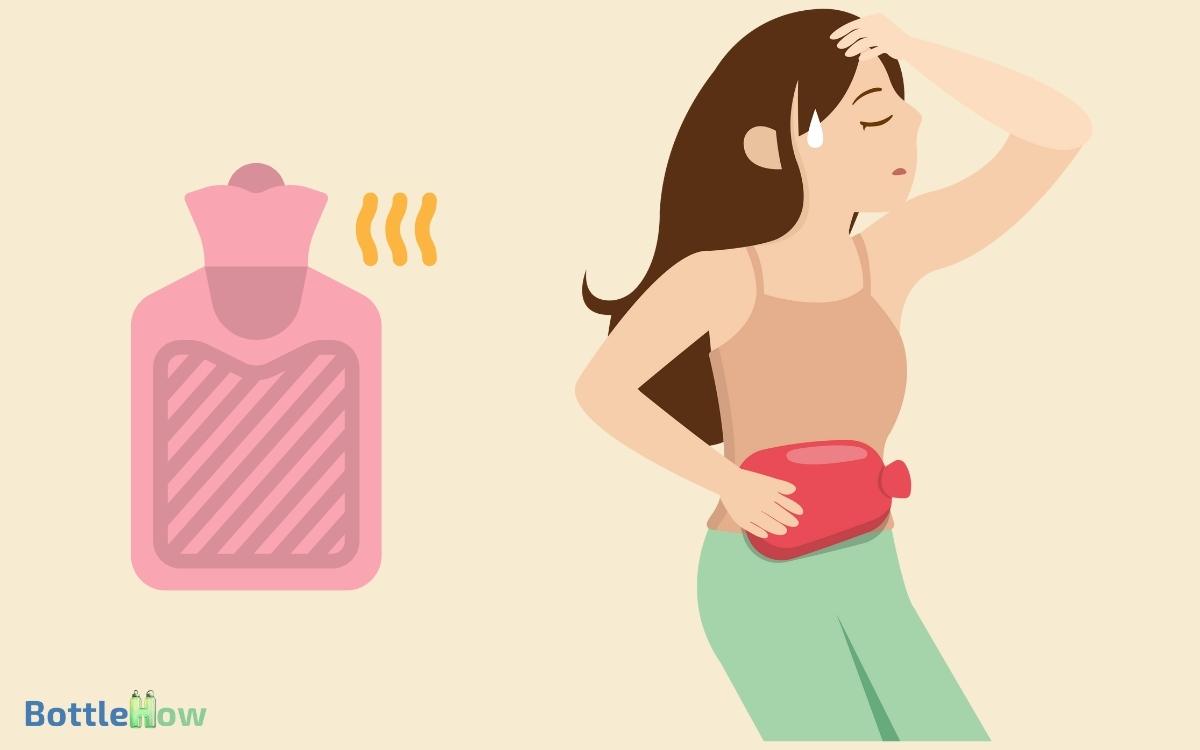
Key Takeaways
Understanding Diverticulitis Pain
Diverticulitis pain typically results from inflammation or infection in the diverticula, small pouches that can form in the walls of the colon.
When these pouches become inflamed, you might experience symptoms such as abdominal pain, fever, and changes in bowel habits. The pain often localizes in the lower left quadrant of the abdomen and can be quite severe.
Studies indicate that a high-fiber diet and adequate hydration may help prevent flare-ups. However, once inflammation occurs, medical intervention, including antibiotics and sometimes hospitalization, is often required.
Understanding the underlying causes and the body’s inflammatory response is essential for effective management.
Recognizing early symptoms and seeking prompt medical attention can greatly improve outcomes for diverticulitis sufferers.
How Heat Therapy Works
When you apply heat to the affected area, it increases blood circulation, which helps deliver essential nutrients and oxygen to the tissues.
This enhanced circulation can reduce muscle tension and alleviate the pain associated with diverticulitis.
Heat therapy is a non-invasive method that provides symptomatic relief through these physiological mechanisms.
Increases Blood Circulation
Applying heat to the abdominal area can enhance blood circulation by causing vasodilation, which increases blood flow to the tissues. This process helps deliver more oxygen and nutrients while removing metabolic waste.
Increased circulation can support the healing of inflamed diverticula, reducing pain and discomfort.
| Benefit | Mechanism | Outcome |
|---|---|---|
| Enhanced Healing | Improved oxygenation | Faster recovery |
| Pain Relief | Reduced inflammation | Greater comfort |
| Toxin Removal | Boosted lymphatic flow | Decreased swelling |
Heat therapy’s efficacy is documented in clinical studies, showing significant improvements in tissue regeneration and inflammation reduction. By using a hot water bottle, you’re promoting a favorable environment for healing.
This simple yet effective method can be a valuable tool in managing diverticulitis symptoms, making the journey to recovery smoother and more comfortable.
Reduces Muscle Tension
Heat therapy effectively reduces muscle tension by causing vasodilation, which improves blood flow and relaxes muscle fibers in the affected area.
When you apply a hot water bottle to your abdomen, the heat stimulates thermoreceptors, which can inhibit pain signals to the brain, providing analgesic effects. This can help relax muscles and ease discomfort, making it a simple yet effective remedy for various abdominal issues. Using a hot water bottle for nausea may also promote better circulation and reduce cramps, further soothing an unsettled stomach. Many people find that the gentle warmth provides comfort and helps them feel more at ease during digestive distress.
Additionally, increased blood flow brings more oxygen and nutrients to the tissues, aiding in the repair of damaged muscles and reducing spasms.
Clinical studies support the efficacy of heat therapy in managing muscle tension and discomfort. By relaxing the smooth muscles of your gastrointestinal tract, a hot water bottle can help alleviate the cramping and pain associated with diverticulitis.
This method is non-invasive and can be a beneficial adjunct to other treatments, improving overall comfort.
Benefits of Using Heat
Applying heat with a hot water bottle can provide significant benefits for managing diverticulitis.
You’ll experience pain relief through the modulation of nerve endings, muscle relaxation due to decreased muscle tension, and enhanced blood circulation that promotes healing.
These mechanisms work synergistically to alleviate symptoms and improve your comfort.
Pain Relief Mechanism
Using a hot water bottle for diverticulitis can alleviate pain by promoting muscle relaxation and improving blood flow to the affected area. When you apply heat, it causes vasodilation, which increases circulation.
Enhanced blood flow brings additional oxygen and nutrients to the inflamed tissues, accelerating the healing process.
Additionally, heat stimulates thermoreceptors, which can diminish the transmission of pain signals to the brain, offering relief.
Furthermore, the warmth from the hot water bottle can reduce muscle spasms around the diverticula, thereby decreasing pain intensity.
Clinical studies suggest that thermotherapy is a non-invasive, effective method to manage discomfort associated with diverticulitis. Employing a hot water bottle can be a valuable adjunct to your all-inclusive treatment plan.
Muscle Relaxation Benefits
In addition to alleviating pain, thermotherapy offers significant muscle relaxation benefits by reducing muscle tension and spasms in the abdominal region affected by diverticulitis.
Applying heat from a hot water bottle can induce vasodilation, which enhances the delivery of oxygen and nutrients to muscle tissues.
This process helps in minimizing muscular contractions and easing the tightness often experienced during a diverticulitis episode.
Moreover, the soothing heat can stimulate sensory receptors in the skin, which can, in turn, diminish the transmission of pain signals to the brain.
Enhanced Blood Circulation
Thermotherapy greatly enhances blood circulation, facilitating improved nutrient and oxygen delivery to the tissues affected by diverticulitis.
When you apply a hot water bottle to the abdominal area, it causes vasodilation, or the widening of blood vessels. This process increases blood flow, which can expedite the healing of inflamed diverticula.
Enhanced circulation helps reduce localized pain and swelling by flushing out inflammatory mediators and supplying essential nutrients needed for tissue repair.
Additionally, the increased blood flow can help remove metabolic waste products from the affected area.
Hot Water Bottle Techniques
Several effective hot water bottle techniques can alleviate diverticulitis symptoms by targeting abdominal discomfort and promoting muscle relaxation.
To begin, place the hot water bottle on your lower abdomen for 15 to 20 minutes, ensuring the temperature is tolerable. This direct application helps soothe muscle spasms and reduce pain.
Another technique involves cyclic heat application: alternate between 10 minutes of heat and 10 minutes without. This intermittent approach can enhance blood flow and further relax the muscles.
Additionally, consider using the hot water bottle while lying down in a comfortable position to maximize muscle relaxation.
Safety Considerations
While employing these hot water bottle techniques, prioritize safety to prevent burns or skin irritation.
Always use a cover or wrap the bottle in a towel before applying it to your abdomen. Confirm the water temperature is warm but not scalding, ideally around 104°F (40°C).
Limit application time to 20 minutes to avoid prolonged exposure, which can lead to thermal injury.
Regularly inspect the bottle for leaks or signs of wear to mitigate the risk of burns. If you have neuropathy or impaired sensation, consult your healthcare provider before using heat therapy.
Be vigilant for any signs of skin damage, such as redness or blistering, and discontinue use immediately if they occur.
Alternative Pain Relief Methods
In conjunction with thermotherapy, you can explore pharmacological and non-pharmacological approaches to alleviate the pain associated with diverticulitis.
Pharmacological methods include the use of analgesics like acetaminophen and nonsteroidal anti-inflammatory drugs (NSAIDs). Antibiotics may be prescribed if an infection is present.
Non-pharmacological options encompass dietary modifications, such as increasing fiber intake and avoiding trigger foods. Probiotics can also help maintain gut flora balance.
Relaxation techniques like deep-breathing exercises and mindfulness meditation may reduce stress, potentially alleviating pain. Acupuncture and acupressure have shown promise in managing gastrointestinal symptoms.
Always consult your healthcare provider before initiating any new treatment to make sure it’s appropriate for your specific condition and doesn’t interfere with existing therapies.
Conclusion
Wrapping up, using a hot water bottle for diverticulitis is like wrapping your abdomen in a warm hug of relief. Heat therapy can effectively alleviate discomfort by relaxing your muscles and improving circulation.
It’s a straightforward, evidence-based method that can be a soothing addition to your pain management toolkit. However, always weigh the benefits against potential risks and consult with your healthcare provider for a holistic approach to managing diverticulitis pain.

